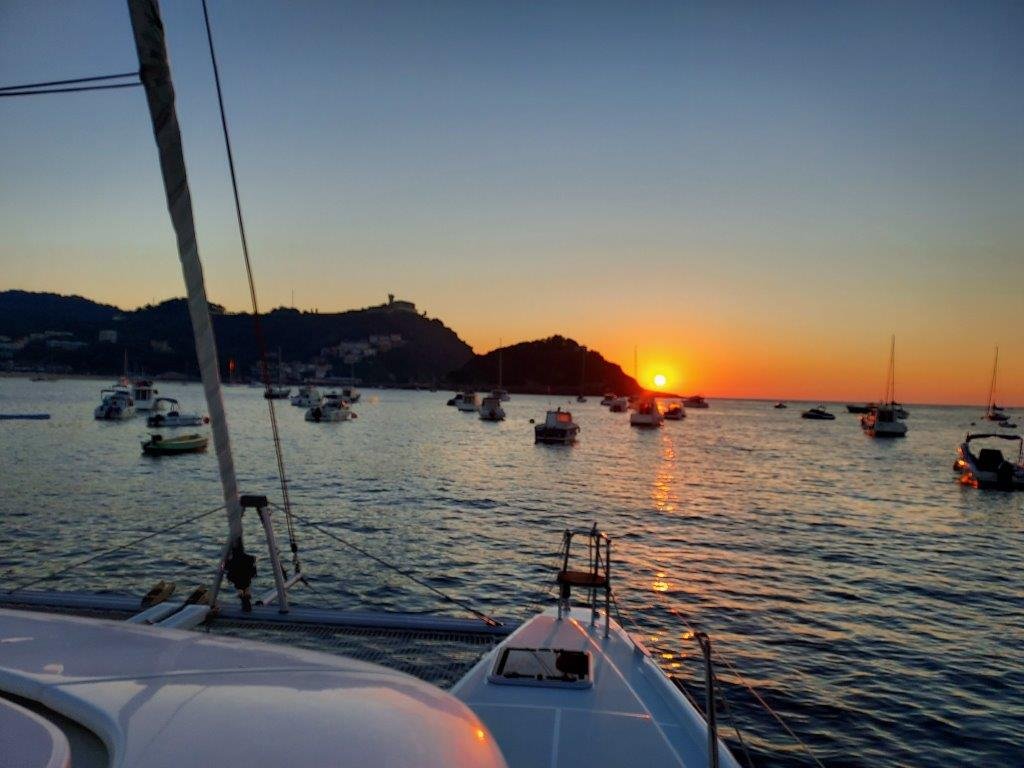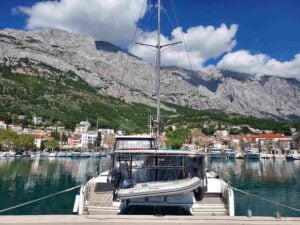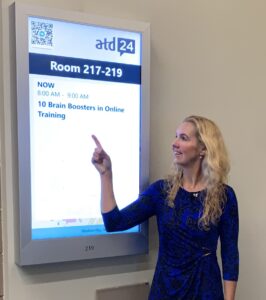We sailed into Spain, Viva España, we hoisted the yellow-red flag! We have been sailing from San Sebastián to Bilbao, which is Spanish Basque Country. Here we enjoyed the good life: still the green hills of the Pyrenees in the background, eating pintxos, walking in the small streets of the old villages, watching people enjoying drinks at the fizzling Plaza’s, or looking at the long Playa’s at the coastline. This season in summertime is also for many Spanish cities the time of (religious) festivals with music and activities.
We have been in bays and anchoring more here at the Basque Country coast, than we have during all the 15 months that we have been sailing so far! Because it is easy and more beautiful to spend time on your boat in a bay here in Spain than in a Spanish harbor. Sometimes we have to tie our boat up to a yellow or orange mooring ball in the bay, which is connected to the sandbottom with a heavy chain, but usually you are free to anchor in the bay at a place that you like, as long as it is not close to the swimmers along the beach.
These are the 5 places that we visited along the coastline from San Sebastián to Bilbao:
- Pasaia
This is a hidden treasure in the Bay of Biscaye! When you start sailing from Hendaye to the west, most people go to San Sebastián right away. But one estuary before San Sebastián, hidden between 2 steep walls in what seems like a long small gap, is the entrance to Pasaia, a beautiful old village. We enjoyed walking around in the small streets with many colorful houses, watching a wedding on the main square, and eating sardines at the top of the hill overlooking the water.
These sardines were amazing, by the way: the small Kantina in Pasaia is really worth a stop! They grill the fresh sardines outside for you and you can find a place on their terrace in the sun or shadow to eat the simple but delicious meal with bread, a salad and a tortilla made of eggs and onions.
2. San Sebastián
The entrance to this city by boat is spectacular: it is called the Rio de Janeiro of Europe, because it also has a high hill with a statue of Jesus Christ in front of the bay and city. And San Sebastián is also situated in a beautiful halfmoon shaped bay with white beaches. It is a pleasure to anchor here, because it’s sheltered and has such a lively bay with people who swim, paddleboard, surf, row in front of the famous beach ‘La Concha’ which is 4 km long! So I took our paddleboard also out for a tour around the bay.
When we took our dingy to see the old city (Ciudad Vieja), we saw many little bars where people stand outside at high small tables to eat pintxos and drink local cider. In Holland we are not used to that: people usually sit on big terraces on a square or in front of a restaurant. Here there a small tables on the side of the whole street in almost every street! San Sebastián is the ‘capital’ of pintxos and food in general. Here are the most high quality restaurants of Spain, most Michelinstars and chefcooks from Spanish TV.
The beaches here are kept very clean: all day a little boat sails around the bay to clean up plastic and garbage and every morning the sand on the beaches is evenly distributed by tractors. At 11.00u and 20.00u there is a speaker (Dingdong!) on the beach that announces the baywatch has started for that day (or ended).



3. Getaria
To be honest, we wanted to visit Zarautz. But while anchoring there, we experienced quite some swells, which wasn’t very comfortable. Since it was later in the afternoon, we decided to go into the harbor around the corner, which turned out to be the beautiful city of Getaria. The city is situated on top of a hill, so after visiting the harbor master, we climbed up the stairs and ended up in the old small streets with beautiful old buildings and an impressive church. Again enjoyed a lovely fresh fish meal and looked over the beaches. Sometimes you get these gifts in live!



4. Lekeitio
‘Señor del barco, señor del barco!’. When we anchor in front of the beaches with our catamaran, we often attract attention. People standing on the quays taking pictures, swimmers that come towards the boat or people on other boats passing by, pointing at our boat. And since it is holidaytime also children are present in the water and they try to get our attention: they shout at Gilles: ‘Señor del barco, señor del barco!’. They want to swim under the boat in between the 2 hulls or even better: try if they can jump of the roof of the boat in the water! Ofcourse, we don’t allow that last request, otherwise we get all school children of the village jumping of our ‘party boat’ 😉.
Lekeitio was a very friendly and cosy place and had a beautiful small beach. We enjoyed swimming and anchoring there!
5. Bilbao
After visiting the small villages of Getaria and Lekeitio, it was time to visit a big city again. Bilbao was a great place to visit! The harbor is impressive, long and small. So it’s actually a long way from the city center, but we were friendly received by the small harbor of Santurtzi, one of the first suburbia’s of Bilbao. Little did we know that they had a festival week with lots of live bands, stalls, fireworks and activities. And the harbor was the center of it all, so we sat first class during the fireworks on the rooftop of our catamaran. We even witnessed a procession passing by: the saint of this city is Carmen and during the ‘Festival El Carmen’ Her Statue is carried from the church to the harbor. She is placed on a rowing boat, then the boat goes to the sea, seamen throw flowers in the sea and then returning again with the statue back to the harbor while the music is playing out of the harbor speakers. Impressive to watch this ceremony.
We cycled from the harbor of Santurzti to the city center of Bilbao (45 minutes) and during that trip we had to take The Puente Colgante: a suspension bridge that connects 2 banks in Bilbao, so standing on a little cart which was connected with long cables to the bridge, we held our our bikes next to us and ‘floated’ to the other side of the bank in 1 minute.
In Bilbao we cycled to the famous Guggenheim Museum. This museum is one of the four Guggenheim museums in the world and is a museum for modern and experimental art. The building itself is already a work of art, it’s made almost entirely of titanium and sparkles in the sunlight. And 5 art pieces are placed outside, including the famous Jeff Koons’ artwork ‘Puppy’.



This Puppy represents a 12 meter high terrier that is lined on the outside with no less than 70,000 live flowers. These flowers stand on 25,000 kilos of soil that is held up by a steel frame. Due to the passing of the seasons, the flowers need to be replaced twice a year – with begonias and petunias for spring and summer and violets for fall and winter. It’s a job that takes 20 gardeners during nine days. Because the flowers are replaced, Puppy not only gets a different coat twice a year, but also a different appearance.

In 1997, Puppy was sold to the Guggenheim Museum in Bilbao for the opening ceremony of the museum. A few days before the opening of the museum, it was discovered that three ETA terrorists dressed as gardeners were hiding a bomb in the artwork….Luckily the opening went smoothly otherwise it would have been world news as well, but with shocking images.









